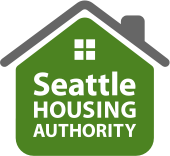As a landlord in the Housing Choice Voucher Program, you will use the same lease for voucher-assisted tenants that you use for other renters, as long as the lease includes:
• The names of the landlord and tenant
• The address of the unit, including apartment number
• The monthly rent paid to the landlord
• A list of utilities and appliances supplied by the landlord
• A list of utilities and appliances supplied by the tenant
• An initial lease term of 12 months
How to lease a unit
Leasing a unit to a voucher-assisted tenant is a six-step process.
1. Screen the tenant
Voucher-assisted tenants should be screened in the same way you would screen any other tenant before entering into a lease agreement.
2. Get the leasing kit from the tenant
When tenants are issued a voucher they receive four forms that should be given to you after you have screened the tenant and agreed to rent to them:
• Request for Tenancy Approval
• Lead-Based Paint Disclosure (for buildings built before 1978)
• W-9 (request for taxpayer identification)
You should complete, sign and date the forms as soon as possible. The tenant will sign and date the Request for Tenancy Approval and Lead-Based Paint Disclosure forms as well.
You then return the completed forms to SHA:
Seattle Housing Authority
Housing Choice Voucher Program
Attn: New Move-In Team
101 Elliott Ave W, Suite 100
P.O. Box 79015,
Seattle, Washington, 98119.
P.O. Box 79015,
Seattle, Washington, 98119.
Fax: 206.239.1770
You may also drop them off during business hours at the street address above.
3. Seattle Housing Authority reviews the documents and approves the proposed rent
Once the agency receives all required documents from you, they will be checked to make sure the information provided is complete and accurate. The proposed rent for the unit must also pass two tests.
a. The rent is affordable—during the first lease term, the tenant’s portion of rent and utilities cannot exceed 40 percent of the their monthly income. Side agreements requiring them to pay more than 40 percent of income are prohibited.
b. The rent is reasonable—the rent must be comparable to similar units in the same area. Seattle Housing Authority decides if rent is "reasonable" based on an inspection of the unit and market data about rent levels in Seattle.
If the proposed rent does not pass both of these tests, you may be asked to negotiate a lower rent. You are never required to lower rent, but if you do not agree to a rent that meets both requirements noted above, the tenant will have to find another unit.
Seattle Housing Authority will usually call you to confirm information and answer questions within 10 days of the receipt of the leasing kit.
4. Prepare the unit for inspection
If the proposed rent is affordable and reasonable, Seattle Housing Authority will contact you to schedule a Housing Quality Standards inspection of the unit. These inspections make sure that housing is decent, safe, and sanitary. Learn more about inspections. If you attend to all potential issues prior to the inspection appointment, the unit is more likely to pass and you will save the time and delay of a re-inspection.
5. Attend the inspection appointment
You or an authorized representative must attend the initial inspection. The inspector may find items that must be fixed before the unit is approved for the program. In that case, you will be given a reasonable amount of time to fix the problems, and the unit will be inspected again.
6. Return the lease and paperwork to Seattle Housing Authority
After the inspection, Seattle Housing Authority will send you the Housing Assistance Payment contract and Tenancy Addendum. This usually happens within 10 days. You then sign the payment contract, sign the lease and the Tenancy Addendum with the tenant, and return a copy of all three signed documents to Seattle Housing Authority at the same contact information as in Step 2.
Seattle Housing Authority will send your first payment after all paperwork is received. Your first payment will be prorated to the date the unit passed inspection. Subsequent payments will arrive on the first of every month.
